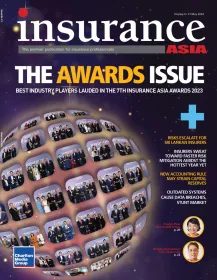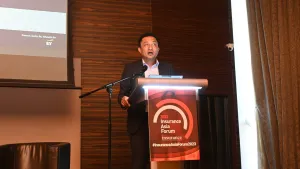Market Saturation and Competition: Obstacles in Singapore's Insurance Sector
By Neeraj KaushikThere are five key challenges the Singaporean insurance landscape needs to address.
The life insurance industry in Singapore stands at a crossroads, facing a myriad of challenges in an ever-evolving landscape. From regulatory changes to technological disruptions, insurers must navigate through turbulent waters to secure their foothold in the market.
Thus, let’s dive into the key challenges faced by the life insurance industry in Singapore and propose actionable strategies to overcome them.
Regulatory hurdles
Singapore's stringent regulatory environment poses a significant challenge for insurers.
Compliance with regulations such as the Insurance Act and regulatory capital requirements demands substantial resources and operational adjustments.
Insurers must prioritize regulatory compliance by investing in robust risk management frameworks and ensuring transparency in their operations. Collaborating closely with regulatory bodies can facilitate smoother adherence to regulatory mandates.
Changing consumer behaviour
Shifting demographics and changing consumer preferences present challenges for insurers. With millennials and Gen Z entering the workforce, there is a growing demand for digital solutions and personalized offerings.
Embrace digital transformation by leveraging technology to enhance customer experience. Invest in intuitive mobile apps, AI-driven chatbots, and data analytics to tailor products and services to individual needs.
Educating consumers about the importance of life insurance through targeted marketing campaigns can also foster greater awareness and engagement.
Market saturation and intense competition
The life insurance market in Singapore is highly saturated, with numerous players vying for market share. Intense competition exerts pressure on premiums and profitability, making it challenging for insurers to differentiate themselves.
Focus on niche markets and specialized products to carve out a unique selling proposition. Developing innovative solutions such as income protection plans for gig economy workers or customizable policies for specific demographics can help insurers stand out in a crowded market.
Additionally, fostering strategic partnerships with banks, fintech companies, and distribution channels can expand market reach and enhance distribution capabilities.
Low insurance penetration rates
Despite Singapore's high GDP per capita, insurance penetration remains relatively low compared to other developed countries. Limited awareness, misconceptions about insurance, and a lack of trust in insurers contribute to this challenge.
Launch educational initiatives to increase financial literacy and promote the importance of insurance protection. Collaborate with government agencies, educational institutions, and industry associations to conduct outreach programs and workshops.
Leveraging social media platforms and digital channels can also help reach a wider audience and debunk common myths surrounding insurance.
Rising healthcare costs and longevity risk
Singapore's ageing population and escalating healthcare costs pose long-term challenges for insurers. With increasing life expectancy, insurers face greater longevity risk, necessitating adequate reserves and risk management strategies.
Develop innovative health and retirement solutions to address the evolving needs of an ageing population. Introduce products that offer comprehensive coverage for critical illnesses, long-term care, and healthcare expenses.
Implement proactive risk management practices, including dynamic pricing models and reinsurance strategies, to mitigate longevity risk and ensure sustainability.
Adopting a proactive approach
In conclusion, the life insurance industry in Singapore confronts a multitude of challenges ranging from regulatory complexities to changing consumer dynamics.
By adopting proactive strategies focused on regulatory compliance, digital innovation, market differentiation, education, and risk management, insurers can navigate through these challenges and emerge stronger and more resilient in an increasingly competitive landscape.
Embracing change, fostering innovation, and prioritizing customer-centricity will be pivotal in shaping the future success of the life insurance industry in Singapore.












 Advertise
Advertise












